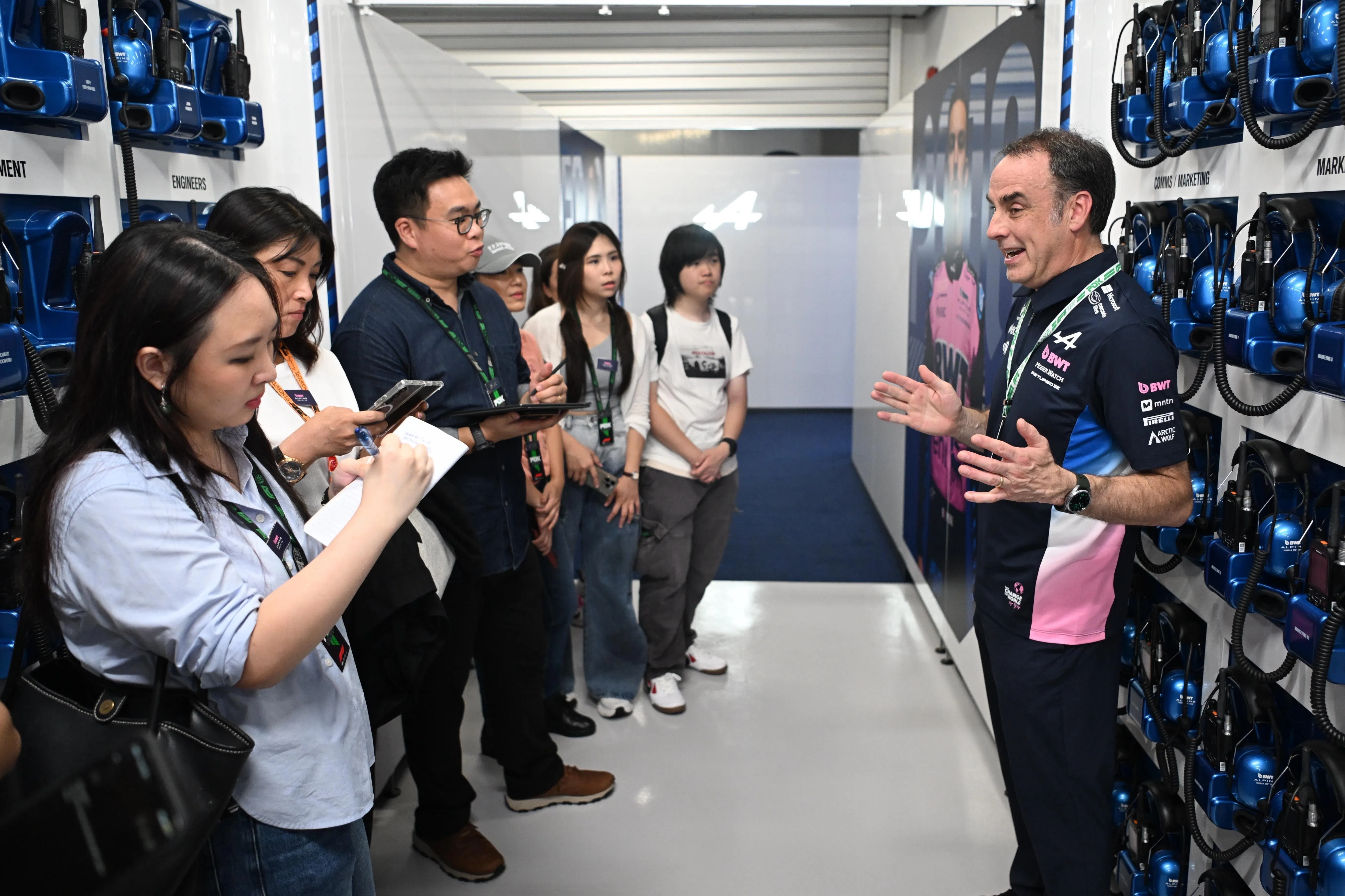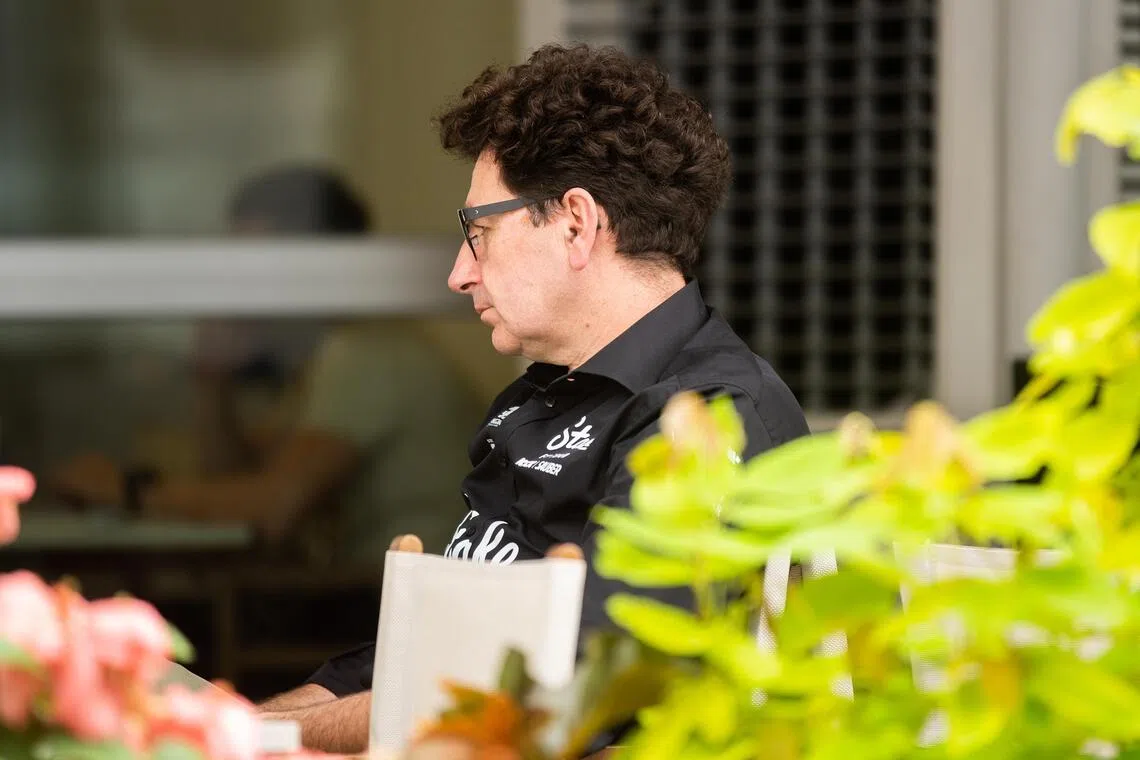AI in the fast lane: F1 teams Alpine, Audi use machine learning as force multiplier
Artificial intelligence in F1 is not a way to cut jobs, but a way to make every dollar in the cost cap count for more

[SINGAPORE] While artificial intelligence (AI) rocketed into the public consciousness in 2023 with ChatGPT, businesses and enterprises have been using it for much longer and under more technical monikers such as “machine learning”.
The 10 Formula One (F1) teams that turned up in Singapore for the race weekend that culminated in a George Russell win and McLaren’s second title in a row have been using it for just as long, with data processing a key use case. An F1 car has about 300 sensors and generates 1.1 million telemetry data points per second, according to AWS.
In 2022, what was at first 1 terabyte of data across the race weekend per car for the Mercedes-Benz F1 team, grew to about 11 terabytes of data sent to and from its factories in the UK.
Much of this data is not in the same format, nor is it easy to generate insight that translate into the much-coveted milliseconds of pace on the track. The longer it takes to parse the data, the less time there is also left to focus on other parts of the cars’ development.
The use of AI in the world of F1 has thus become particularly crucial, well beyond public-facing deployments such as Google’s large language model Gemini or Adobe Photoshop’s generative AI.
While the Alpine and Sauber drivers ended up occupying four of the bottom five positions at the Singapore Grand Prix on Sunday (Oct 5), they were still very competitive in terms of the amount of data they generated across the three days of running – data that AI can help process far more quickly than previous generation systems such as HANA from enterprise resource planning company SAP.
AI was described as a “game changer” by Alpine’s head of technical and integrated partnerships, Ian Goddard, during a media tour on Thursday.

Not only can AI help engineers solve technical equations, it can also help in identifying defects through sound, build correlation between racetrack data and simulator data, and free up resources to be used elsewhere – thereby acting as a force multiplier.
“In Formula One, we keep talking about performance, but if it could be maybe operational efficiency ... if the whole factory gets more efficient, that’s faster to get (upgrades) on the car,” said Goddard.
SEE ALSO
Keeping pace with AI developments in F1
Less than a second separated Mercedes-Benz’s Singapore Grand Prix polesitter George Russell from Aston Martin’s 10th-place Fernando Alonso in the qualifying round.
Such tiny differences could result in teams such as second-placed Mercedes winning about US$124 million in prize money at the end of the season, compared to Aston Martin’s US$83 million in seventh place.
The increased pace of development can also translate into cost savings for F1 teams, further boosting profitability.
The use of AI to achieve this is still in its “early days” and so rapidly-evolving that Goddard, who has seen countless transformations in car development across nearly three decades in F1, can hardly forecast how it might be used in just a few years.

Mattia Binotto, head of the Audi F1 project (which will formally take over Sauber next year), on Sunday echoed his sentiments, describing machine learning as a “really big” disruption to the F1 development process – not least because there are a few years-long window of opportunity for teams to steal a march on their competitors.
Like in the regular world, regulations are still trailing the pace of AI and machine learning development. Goddard said he expects rules to eventually cover the use of AI, but cannot forecast when or how that might happen.
At a media roundtable on Sunday, global motorsport governing body FIA said it embraces the use of new technologies such as AI. It also warned that it does not want F1 to become a “war of who buys the best supercomputer”, but noted that formal rules on AI hardware for F1 teams are still about three or four years away.
“It’s a big opportunity for all the teams,” said Binotto. “Whoever will be the most sharp on it may have the most of the benefits.”
Goddard said that the use of AI in F1 is at a point where teams are deploying them on problems that they “had not even thought of six months ago, let alone how to solve (them)”.
However, Binotto cautioned that teams still lack a “good understanding” about the technology’s true potential, even as every F1 team invests in the use of AI to supercharge car development.
Goddard was somewhat more excited about the technology’s potential, stating that nearly every role in an F1 team – whether in engineering or business processes – has been or will be enhanced by AI. The current challenge, he said, comes in trusting the output and correlating it with existing results.
For 2026 and beyond, Audi plans to use AI for technical developments and data acquisition process improvements, similar to the other teams, but Binotto said he believes the true difference will be in deploying AI in the right department rather than in using the most cutting-edge features.
“(AI) can quickly become ... a waste of energy if you’re not focusing on what’s right,” he said.
F1 cost cap limitations around AI
The F1 cost cap, a limit on how much teams can spend in a season, also comes into play when deciding how to allocate the budget towards traditional development paths such as wind tunnel testing or AI use.
From 2023 to 2025, the limit has stood at US$135 million (and is adjusted for inflation). It will be US$215 million to reflect new regulations and different accounting processes.
“Every dollar we spend within the cost cap, you’re critically justifying the spend – ‘is that the best value we can get for that dollar?’” explained Goddard. “It’s dollars per millisecond of performance on the track.”
While the FIA might want to discourage a supercomputer arms race between teams, the teams themselves are cautious about spending US$10 million on something like the “world’s biggest supercomputer” without knowing if it is the best use of money.
Despite the restrictions, there may also be ways for teams to use AI in improving efficiency outside of car development that does not fall under the cost cap’s purview.
“You can still use AI outside of the cap for non-relevant activities,” said Binotto. “There is much that you can still learn using AI outside of the cap.”
Such uses could be in marketing and fan engagement – as used by IBM for Scuderia Ferrari – sponsorships, or even in supply chain management. With staff and engineers less focused on details that slow them down, every dollar spent can go further than it did before the use of AI.
Unlike in many industries, where AI is raising the spectre of job losses, its future in F1 seems to be not just in making every millisecond of performance count, but also in making every dollar more efficient.
This, said Binotto, will result in more sustainable and efficient processes across the entirety of the F1 paddock.
Decoding Asia newsletter: your guide to navigating Asia in a new global order. Sign up here to get Decoding Asia newsletter. Delivered to your inbox. Free.
Copyright SPH Media. All rights reserved.




